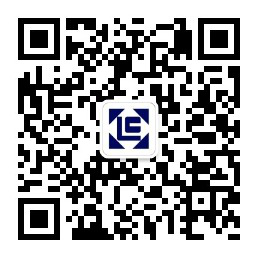China Becomes One of the Top 5 U.S. Patent Recipients for the First Time
- Number of Views:
- Date:2018-01-10
(Summary description)
China Becomes One of the Top 5 U.S. Patent Recipients for the First Time
(Summary description)
- Number of Views:
- Date:2018-01-10
Chinese companies have increased the number of U.S. patents they’ve received by tenfold in less than 10 years, another sign that the world’s second-largest economy is succeeding in its strategy to transform from Silicon Valley’s factory to a powerhouse of research.
Chinese inventors received 11,241 U.S. patents last year, a 28 percent increase over the same period in 2016, according to a report released Tuesday by IFI Claims Patent Services, a unit of Fairview Research LLC. That propels the nation into the top five recipients for the first time, behind the U.S., Japan, Korea and Germany.
The applications are being filed by both established players making the transition and startups, primarily in the electronics field, said lawyer Don Featherstone of Sterne Kessler in Washington, who helps Chinese companies seek and receive U.S. patents.
“They want to launch a product in the U.S., they want to import product in the U.S., and have local sales offices in the U.S. to bring their products to market,” Featherstone said. “They want to be more competitive.”
Patents are a reflection -- albeit imperfect -- of how innovative a company or country is. It conveys bragging rights, and more importantly helps protect companies that are in competitive markets. By obtaining patents in the U.S., the companies are declaring they will sell their own products in the largest market.
Chinese government officials have made innovation a priority for the past decade. The focus has been on growing the number of patents issued in China -- whether by Chinese companies or foreign entities -- and building businesses that can compete on the global stage.
China’s State Intellectual Property Office (SIPO) received 1.3 million patent applications in 2016, more than the combined totals of applications received in the U.S., Japan, and South Korea and Europe, according to a World Intellectual Property Organization report.
China still has far to go to catch up to other countries in its share of U.S. patents. The U.S. Patent and Trademark Office issued 320,003 patents last year, with Chinese companies getting 3.5 percent of them, according to IFI.
Still, Larry Cady, a senior analyst with IFI Claims, said “China is growing at an impressive rate.”
China’s electronics manufacturers, once primarily assemblers of products for foreign companies, have in recent years begun to develop their own technology and their own branded products.
China’s BOE Technology Group, best known for computer and TV displays, saw a 63 percent increase in the number of patents its received to put it at No. 21 on IFI’s list of top 50 recipients. It’s now ahead of Japan’s Seiko Epson Corp. and less than 200 patents from General Electric Co.
“The United States has a huge worldwide influence in science and technology innovation,” said Li Xinguo, vice president of BOE, in charge of technology and its intellectual property management center. “Chinese enterprises have been making remarkable progress in high-tech innovation and international competitiveness in the context of globalization.”
BOE is researching and investing in next-generation organic light-emitting diode screen technology, hoping to supply the next wave of high-definition displays to the likes of Apple Inc.
Huawei Technologies Co., China’s biggest telecommunications gear maker, received 1,474 U.S. patents -- 61 more than BOE, putting the company at No. 20 on the list of recipients. It first entered the top 50 list in 2014. Shenzhen China Star Optoelectronics Technology Co Ltd., an LCD manufacturer, had a 25 percent jump in the number of patents it received, making it No. 45 on IFI’s list. Not all Chinese companies saw an increase. ZTE Corp. had a 16 percent drop in the number of patents it received.
The biggest fields for patents are in high-tech -- digital data processing and transmission (both dominated by International Business Machines Corp.), semiconductors and wireless communications. Fast-growing fields include 3-D processing, machine learning and drones, areas where Chinese firms have been investing.
Biotech startups, founded by people who had been educated in the U.S. and are doing research for things like antibodies to treat cancer, also are working to get U.S. patents, said Jenny Chen, a patent lawyer with Wolf Greenfield in Boston.
“They are aiming at the global market and getting a patent in the U.S. is a must for their business,” said Chen. “If they don’t have U.S. patent protection, they’re not going to attract investment for the global market.”
The top 50 list has historically been dominated by U.S., Japanese and Korean companies, with a few from Europe. While Korean and German companies continued to increase the number of patents received, Japan was almost flat. U.K. inventors received 10 percent more patents, and jumps of more than 4 percent were by both Canada and Switzerland.


Copyright: Beijing Law Intellectual Property Agency Co., Ltd. Powered by www.300.cn 京ICP备09099344号-1
Beijing Law Intellectual Property Agency Co., Ltd.
Copyright: Beijing Law Intellectual Property Agency Co., Ltd. Powered by www.300.cn 京ICP备09099344号-1






